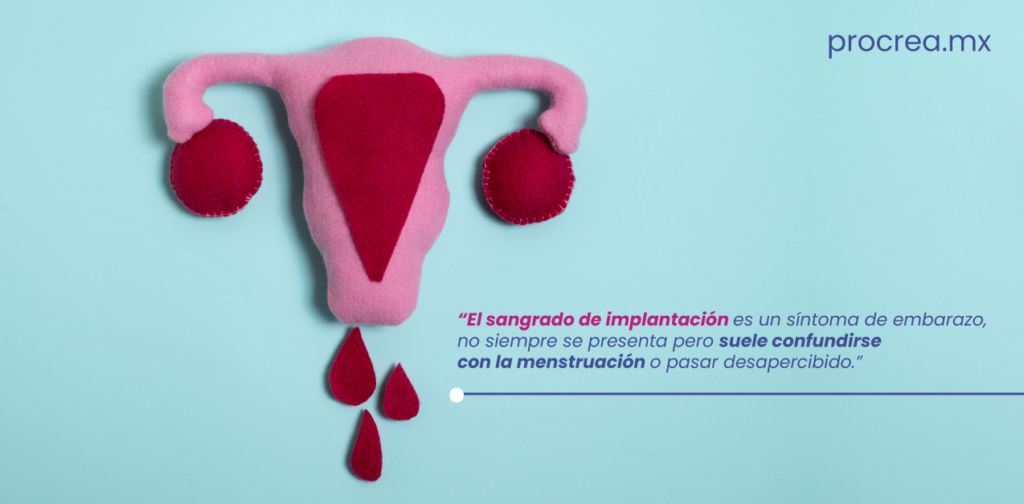- Implantation Bleeding is a common sign of pregnancy, although it is estimated that only 3 out of 10 women experience it. It is often mistaken for menstruation or may go unnoticed. In this blog, we will discuss some characteristics to help you identify implantation bleeding.
What is the Implantation Bleeding?
It is entirely normal for a woman to experience slight bleeding when she becomes pregnant, which is known as Implantation Bleeding This happens because the fertilized egg attaches to the endometrium, causing a rupture in the blood vessels. Implantation usually occurs between the seventh and eighth day after fertilization. It is often confused with menstruation as it may coincide in timing and be accompanied by some discomforts like mild cramps or abdominal twinges.
Characteristics and Differences from Menstruation
The duration of Implantation Bleeding varies from case to case and can last for hours, days, or even up to a week with intermittent spotting. It is important to note that not all pregnancies exhibit this symptom, so it may not occur at all. Many women may not even realize when it happens unless they closely monitor their menstrual cycle.
There are characteristics to differentiate implantation bleeding from menstruation. For example, this bleeding is not thick, and the color can be pink, brown, or light red but not as intense as regular menstruation. It may also be accompanied by other symptoms such as nausea, breast tenderness, headaches, discomfort, or fatigue.
If severe and unusual pain, clots, or heavy flow occur, it is essential to consult a doctor to detect the problem; otherwise, there may be a risk of an ectopic pregnancy. or more serious complications. Importantly, implantation bleeding does not indicate any risk for the mother or the embryo.
Recommendations
Women who are expecting to become mothers are advised to pay close attention to any changes they may experience, especially to differentiate between different types of bleeding. If you suspect implantation bleeding, the first step is to take a pregnancy test. After obtaining a positive result, it is ideal to wait for approximately 15 days and seek the assistance of a specialist for proper monitoring.; With this timeframe, the pregnancy can be confirmed through an ultrasound.
Similarly, if you wish to increase the chances of pregnancy, it is essential to be aware of your menstrual cycle, especially the days of ovulation, and if possible, plan sexual intercourse accordingly. Everybody is different, and not all cycles are regular, but approximately 7 fertile days can be observed within the cycle. Monitoring applications can be a useful tool to better plan and differentiate implantation bleeding from menstruation.
At Procrea, we are happy to accompany you throughout your journey and provide support at all times. Reach out to us and schedule an appointmentWe have a specialized medical team in fertility and Assisted Reproduction ready to address your concerns.











